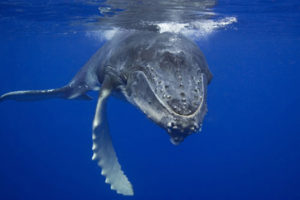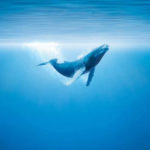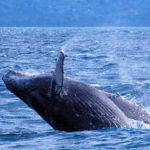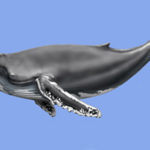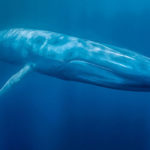Facts about humpback whales
 If humpback whales have friends, then this is for life. In addition, they tend to meet every year.
If humpback whales have friends, then this is for life. In addition, they tend to meet every year.- Humpback whales can sing. During the mating season, “singing” sounds evolve with each passing year and even are transmitted through generations.
- Humpback whales use migratory navigational mechanisms that are not known to scientists, which allow them not to stray from the path and not to deviate from the chosen direction.
- A single female humpbacked whale swam from Brazil to Madagascar. This is a record not only for this species, but for all mammals. The journey of more than 9,800 kilometers was 4,000 km longer than the previous record of humpback travel between breeding areas.
- The love aria of a humpback whale can last a whole day.
- The weight of an adult humpback whale reaches 25-30 tons.
- The weight of a newborn kitten is 1-2 tones with a length of 4-5 meters.
- In length, humpback whales grow to 15-17.4 m.
- Humpback whales are one of the most energetic among whales. Often they make jumps, completely throwing themselves out of the water, striking and flapping their pectoral fins against the surface of the sea, sticking their head or tail out of the water, obliquely to the surface, and so on.
- The humpback whale is one of the most easily identified whales.
- Duration of immersion in a humpback whale from 3-6 to 15-30 minutes (maximum).
- The humpback whale’s fountain is 2 to 5 m high.
- The speed of movement of humpback whales does not exceed 13-15 km / h, and the wounded animals develop speeds of up to 25 km / h.
- The stomach of the humpback whale can hold up to 500-600 kg of fish or crustaceans.
- Milk of the humpback whale consists of: 45-49% fat, 8.6-9.7% protein, 0.35-1.03% sugar and the rest water.
